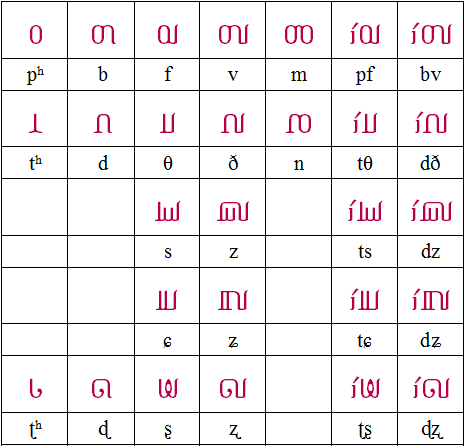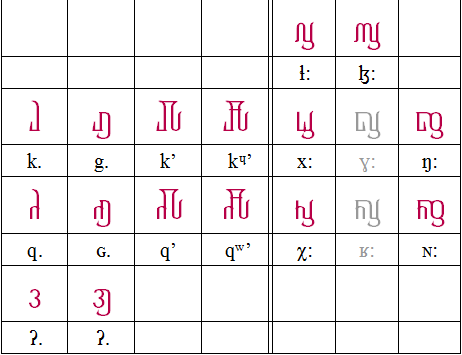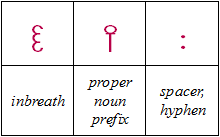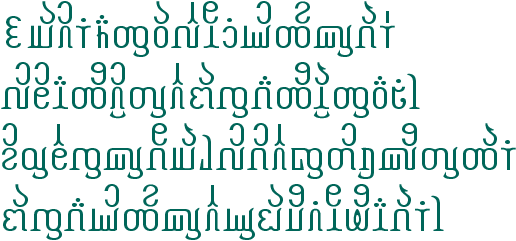This is a development of the SIGIL script (the 30th version) which takes into account the phonotactics of the language, while preserving the shape symbolism of earlier versions, such as the 24th version. It shows the syllabic structure in a similar way to Sigil Panel, but its glyphs are much simpler. There is also some suggestion of the series depicted in the Xylphika script; and there is now some suggestion of Tai alphabets in the way vowels sit upon consonants.
Consonants
Consonants are built quite simply by adding articulation modifiers to base locational glyphs. An unvoiced plosive is the basic unadorned shape. It may be noted that some unvoiced fricatives depart slightly from the otherwise regular assembly of glyphs.
I. Radicals: these are basic onset consonants, and take up the first half of a syllable.
II. Morphologicals – stops & double-continuants: these take up a whole syllable, and are used within the grammatical affix system. Note that the stoppage forms (unreleased stops and ejectives) use a base glyph which is turned backwards.
III. Other consonantal symbols.
Vowels
Vowels which sit on the baseline with consonants are called even – they are weak, consonantal, unstressed. Vowels which go above consonants (or above even-vowels) are called odd – they are clear and stressed. The only vowel glyph with different odd and even forms is /i/, to avoid confusion between the even form and the consonant /t/. Even /i/ and /u/ are equivalent to /j/ and /w/.
The order of reading a word like maui would be:
- consonant m
- odd-vowel a above it
- even-vowel u to the right of the consonant
- odd-vowel i above that.
A radical consonant with an odd-vowel above it forms a whole syllable. It can be seen that the middle channel comprising consonants and even-vowels always has something above (odd-vowel, unvoiced stop crest, ejective crests, vowel-mark) or below (voiced stop tail, double-continuant tails).
Other vowels which can go above certain consonants, but are weak:
Symbols affecting vowels:
An even-vowel without an odd-vowel above is considered to be a complete half syllable, and can be heard as a skip in the otherwise duplet syllabic rhythm. A voiced or unvoiced schwa is always unstressed and short, and the resultant shortening of its syllable also makes a skip in the syllabic rhythm.
Numerals etc
As with the 24th version, numerals are represented by their number of dots; but here the arrangement has changed slightly. Again, the (imagined) dots are connected with the fewest strokes, and with no more than one lift of the pen.
Other symbols:
Sample text
This is a rough transliteration of the beginning of Sonnet 18 by Shakespeare, which keeps to the phonotactics of SIGIL as much as possible.
“Shall I compare thee to a summer’s day?
Thou art more lovely and more temperate;
Rough winds do shake the darling buds of May,
And summer’s lease hath all too short a date.”













